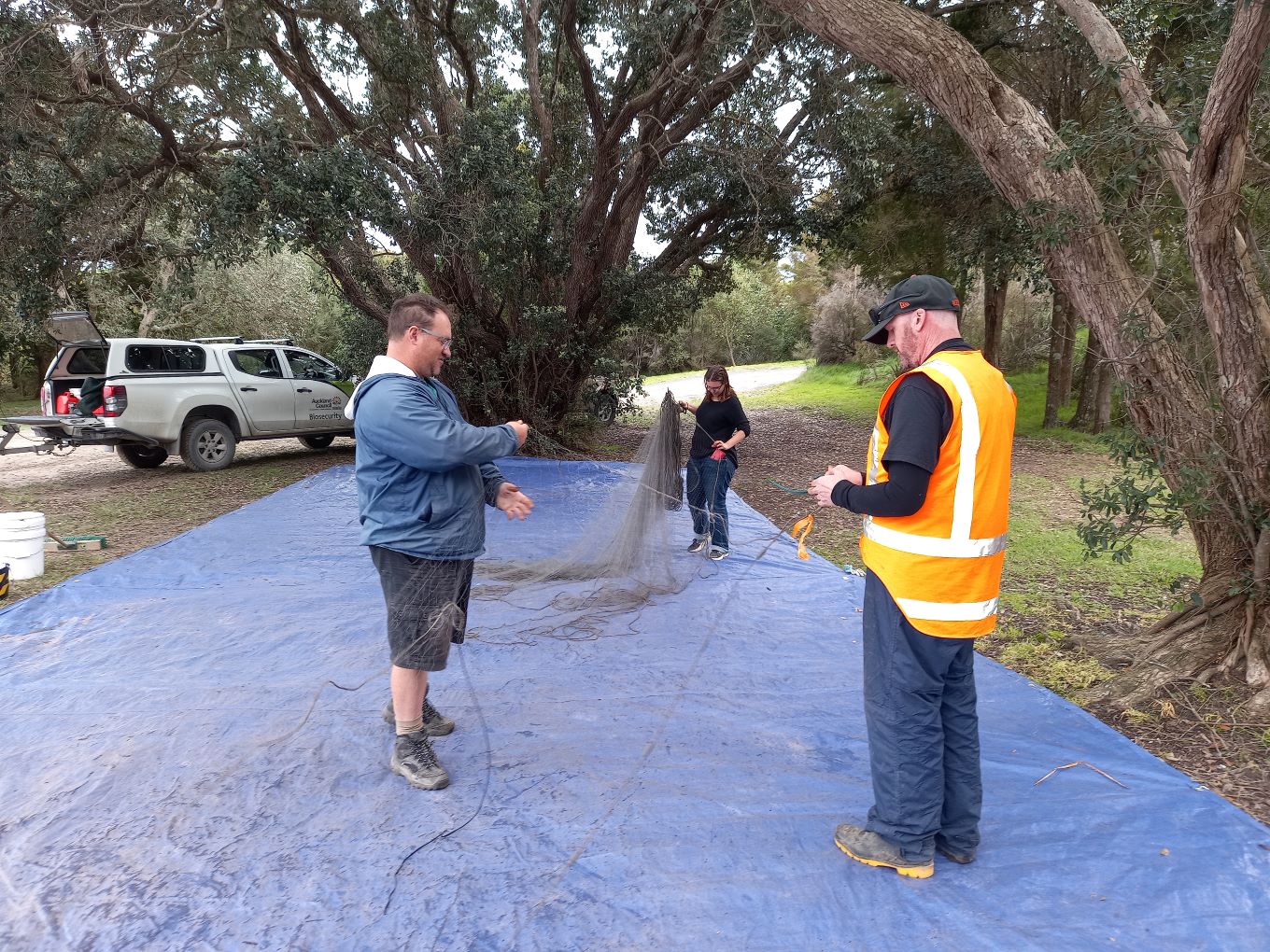Auckland Council has removed more than 800 fish from Lake Tomarata to help preserve the delicate ecological health of the lake.
The pest fish were causing a decline in water quality and threatening native biodiversity, including unique submerged native plants, kākahi (freshwater mussels) and the threatened black mudfish which live in the surrounding wetland.
Senior Biosecurity Advisor Freshwater Belinda Studholme says Auckland Council, with assistance from the University of Waikato and support from DOC, removed some of the fish over the last couple of weeks crisscrossing the lake with nets to catch as many pest fish species as possible before they spawn again this spring.
“We caught large numbers of fish in the first week of fishing and then the catches tailed off in the second week as we achieved control.
“We have drastically reduced the population of pest fish in the lake prior to spring spawning. This intensive control will knock the population back and we can maintain this with shorter periods of follow-up netting in late summer and again next August.”
The fishing is unlikely to eradicate these pests, but the council is hopeful it will control fish to a level that will decrease pressure on native species. The native plants and kākahi will be monitored to assess their recovery.

“One of the pest fish, rudd, are like lake rabbits - they have completely devegetated the lakebed of native submerged plants. The reduction in rudd will reduce the pressure on the native charophytes, which are the native submerged plants,” Belinda says.
“The submerged native plant communities are integral to the health of the lake, they create underwater meadows that bind the sediment to the lakebed and prevent mud and nutrients from being resuspended into the water column making the water turbid and causing algal blooms.”
Belinda says that these pest fish were probably illegally introduced to the lake.
“It is very important not to introduce fish into freshwater bodies as they can have huge ecological impacts and it is difficult and expensive to remove them.
“Lake users can prevent accidental introduction of pest weeds and fish by washing down and removing all plant fragments from boats/vessels and trailers when moving between water bodies.”
Lake Tomarata, north-west of Wellsford and in the northernmost part of the Auckland region, is one of the few remaining Auckland lakes that contains native submerged plant communities and kākahi. In the last 15 years the submerged plants have all but disappeared and the kākahi population has crashed. These species are important to maintain good water quality in the lake but have been destroyed by pest fish.
“Kākahi (freshwater mussels) work like a pool filter, filtering out sediment, bacteria and algae. One freshwater mussel can filter a litre of water an hour so large beds of kākahi can potentially filter a small lake in a few days,” Belinda says.
This targeted pest fish control is part of a wider study of the lake ecology which is looking for management opportunities that will improve lake health and protect this valuable habitat for native species and recreation.
The nets were set on the lakebed from 15 to 19 August and 22 to 26 August to target bottom-feeding pest fish. The fishing methods did not harm native eels and bullies (native fish) in the lake or wetland birds.
The project was funded by the Natural Environment Targeted Rate (NETR) and the pest fish removed from the lake will not go to waste, they will be made into fertilizer.


